Demystifying Google Core Updates 


Wondering what makes search engine giants tick? We’ve created this guide to demystify Google Core Updates in 2020.
This is NOT a high-level guide listing which sites gain or lose some traffic and/or rankings after the latest algorithm update.
Instead we’ve created an in-depth analysis of Core Updates (backed up by our own research). From an industry tools’ comparison to identifying common trends, we’ve created recommendations that marketers and business owners can use to improve their performance in Google Organic Search.
How is this guide structured?
How Google improves the performance and reliability of its Search Engine?
Challenges Marketers & Business Owners Go Through Every Time Google Release A Core Update
New Technology Used For Core Updates
OMG Research: A closer look at Google’s May 2020 Core Update
Recommendations For Marketers & Business Owners
Why Google?
Google is the most popular search engine in the world (91.89% Market Share Worldwide). It’s maintained its position by ensuring its search results are always relevant and useful for the end user. From a business peresptive, they’re trying to improve user retention and ultimately revenue by charging more money for ads.
The formula is quite simple “Better Search Results = More Users = More Advertisers Paying For Ads = More Revenue”
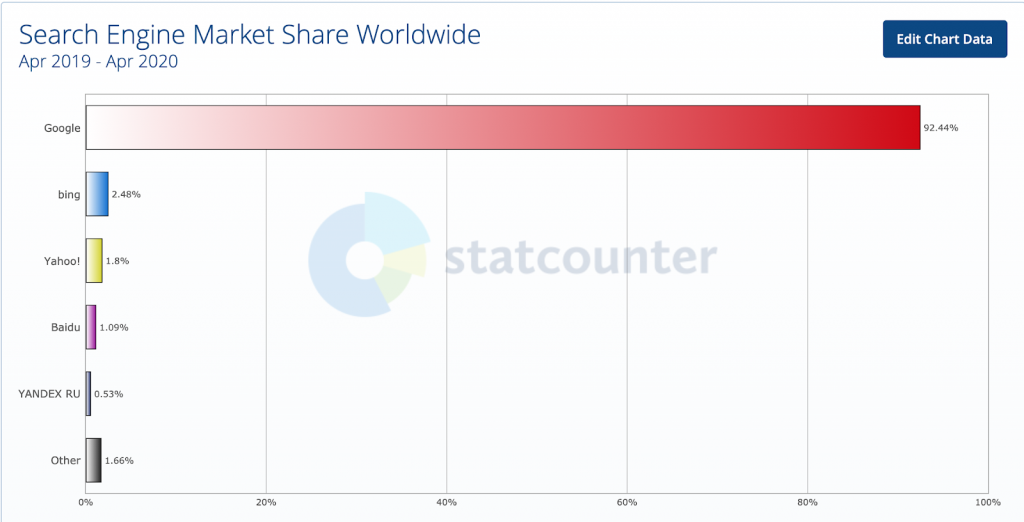
As you can see, it’s in Google’s best interest to make sure search results are always meeting user expectations. How do they do that? Continuous experimentation, regular updates and ongoing improvements of their algorithms.
How Google improves the performance and reliability of its Search Engine?
At a very high level, Google uses a combination of technological solutions (like machine learning and human supervision) to identify shifts in user behaviours and update search results to achieve small incremental improvements of its products on a regular basis.
Some of these changes are happening quite regularly (on a daily basis) and aren’t noticeable for most people.
There are other types of updates/changes that normally have a broader impact and affect a whole range of industries & the search engine’s overall functionality across different verticals. These types of changes are noticeable for most people and are normally announced by Google (either before or after they released them.) Introducing Google Core Updates.
What is A Core Update?
According to Google, “Core Updates” are regular updates the search engine performs to ensure its search engine is consistently presenting relevant and authoritative content to searchers across multiple verticals.
The role of these updates is to ensure that all websites ranking Organically in Google present relevant and authoritative content for the search engine users. Core Updates are strictly related to improve how Google’s systems assess content overall.
Here’s a quick overview of Google Core Updates
- They are broad changes to Google’s search algorithms and systems
- They are normally announced by Google
- They happen several times a year
- They typically take about 1 to 2 weeks to fully roll out.
- They may also affect Google Discover.
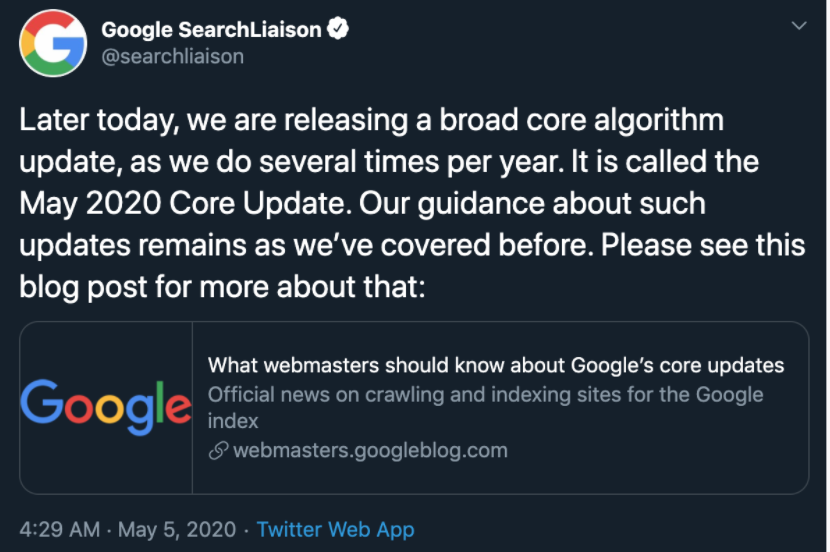
Image: Example of Google announcing May 2020 core update
At OMG we know Google core updates can be stressful and challenging for most marketers and business owners, so we have put together this guide to help you:
- Demystify and understand Google Algorithm Updates
- Create your own plan to address and adapt to these updates
Overview of Google Core Updates
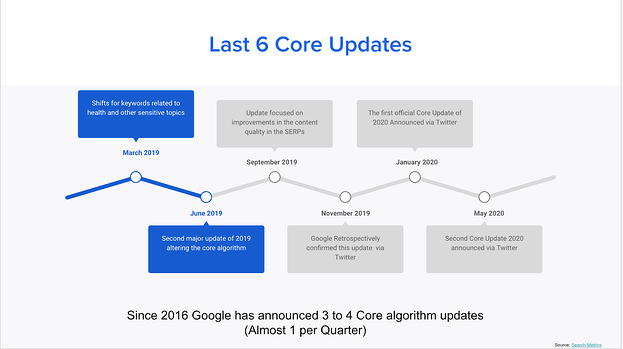
- Over the last 4 years Google has announced 3 to 4 core algorithm updates – Almost 1 core update per quarter
- 8 out of the last 10 core updates were announced by Google
- Every time there’s a new core update, there’s a huge number of articles published based on early results, short-term losses/wins and superficial analyses. Everyone is looking for answers but be careful you don’t want to make changes based on corrupted data or misleading advice. More about this in the next section.
Challenges Marketers & Business Owners Go Through Every Time Google Releases A Core Update
Uncertainty
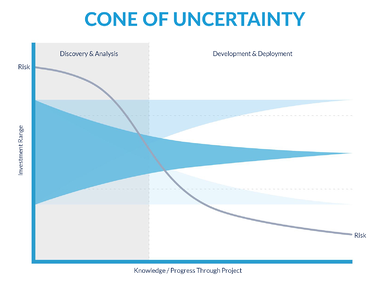
Google’s core updates normally have a significant impact on SERPs, traffic and your businesses bottom line. Even though they aim to improve Google’s user experience, they generate high levels of uncertainty as Google tends to keep the majority of the data confidential.
To deal with high levels of uncertainty, I recommend you to use the cone of uncertainty — a concept developed by PMs and software developers to visually represent uncertainty on software development projects.
The cone of uncertainty helps you understand how at the beginning of a core update very little is known about the update, and so estimates are subject to large uncertainty. The more research and development is done, more information is learned about the update, then the uncertainty tends to decrease.
Misleading Advice

After a core update most business owners and marketers face an excess of general information given by auto proclaimed SEO professionals that have zero or little experience in the field. Most authors provide generic or rather mediocre advice for people who are looking for solutions for complex problems. 99% of the time this type of advice is purely based on assumptions that are not backed up with experience or any type of data and because core updates normally become trending topics, “Industry Mainstream Media” start covering them with light content and the misinformation quickly spreads through the internet.
The above is understandable in an industry where the majority of the workforce (55%) has less than 5 years experience and 79.78% of the global demand for SEO jobs is focused on entry level or beginners candidates.
This basically shows us how the demand for basic SEO content is higher and because there’s not many people with the expertise to differentiate good over bad content.
New Technology Used For Core Updates
Website Representation Vectors
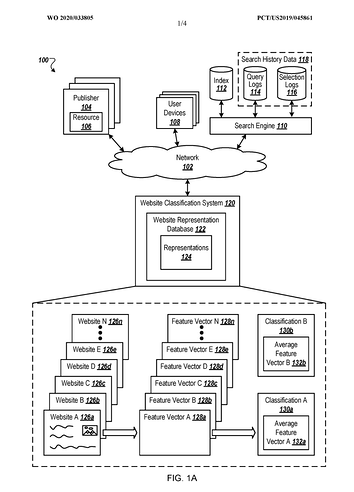
Right after the Medic Core Update back in 2018, Google announced a patent called Website Representation Vectors to classify sites using Neural networks, taking into consideration Google’s Quality Raters’ Guidelines E-A-T (Expertise, Authoritativeness and Trustworthiness).
So, according to this patent, there’s a machine prioritising rank sites with a better level of expertise, authority and trust for ranking purposes.
Personalisation & Ongoing Experimentation
Google is constantly experimenting with its SERPs to find out the best possible experience for their users. Lately they have been A/B testing search suggestions based on user activity
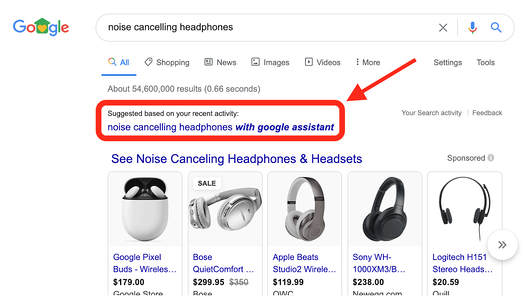
These types of experiments aim to improve Google’s understanding of the intent behind certain keywords and improve users’ experience through personalisation.
The above technologies will prove crucial to predict Google’s Future Core Updates.
OMG Research: A closer look at Google’s May 2020 Core Update
As the leader of OMG’s Research & Development Department I decided to put together a quick research piece, assessing the accuracy of the most popular ranking volatility tools in the market.
We’ll be performing a similar exercise every time Google announces a Core Update so you’ll be able to follow a trustworthy source of information outlining the implications of Core Updates across the web and providing guidance around them.
Here’s a brief outline of our research (Last Update – May 2020)
Methodology
- Currently there are 8 different tools tracking volatility of search results in Google – We use them to assess the reliability and usability of their data and infrastructure.
- We use data form data bases that allowed us to filter Data by Country & Device, so Rankrager & Mozcast were discarded from this study.
- We compared volatility for Results in AU/US on desktop and mobile devices from April 15th to May 14th
Findings
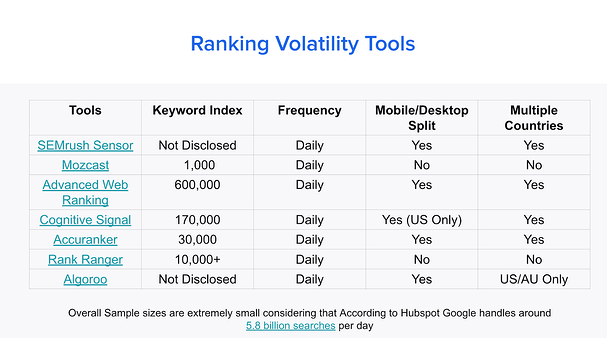
Here are some of the challenges marketers face:
- Every tool uses different sample sizes and data processing methodologies. There’s not an accepted standard throughout the industry
- Overall samples sizes across all tools are extremely small which makes it difficult to get accurate data.
- Most ranking volatility tools don’t have any sort of specialisation which again makes it difficult to get meaningful insights.
Case Studies
Below you’ll find a few interesting insights from our research. If you want access to the full research piece, reach out to me via [email protected]
Popular Examples – Publishing Sites Within the Health Industry
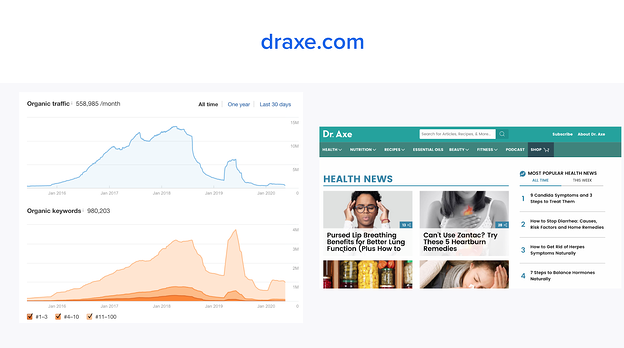
- Draxe.com has been losing rankings over the last 2 years. Every time Google releases a Core Update, the site seems to experience a significant drop in terms of rankings
- Draxe.com content isn’t referencing any scientific studies or papers to back up its claims – Academic research is extremely important in the Health & Beauty industry.
- Draxe.com mainly uses one author for all the articles written — and other authors link to the site’s about page. Therefore, there’s no way for users or Google to check if those authors are real and verify their credentials.
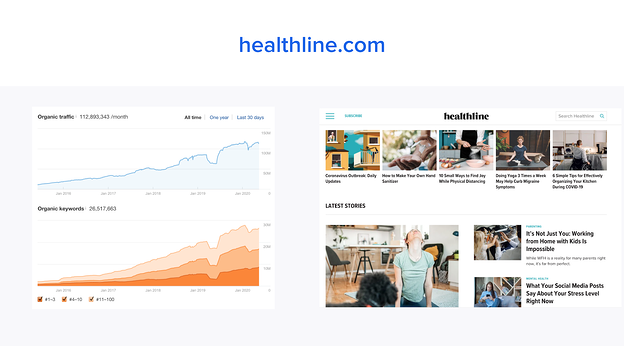
- Healthline.com has been consistently improving in terms of rankings. Every time Google releases a Core Update, the site seems to generate better rankings.
- Healthline.com has a scientific citations section and normally uses 5+ scientific studies/articles to back up their content.
- Healthline.com has a whole team of doctors reviewing content from a scientific perspective. Each of these doctors has a profile and it is pretty easy to verify their identity and expertise.
Small Businesses – Roofing Services
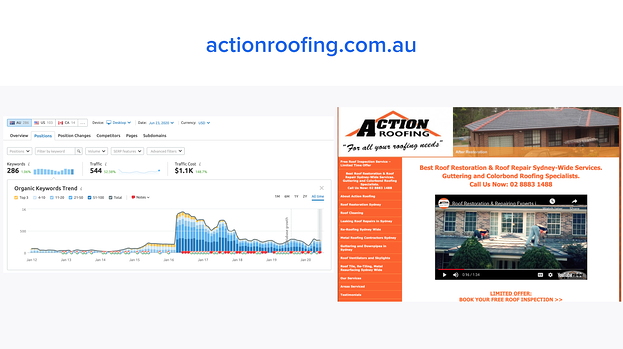
- Actionroofing.com has been losing rankings over the last 3 years. Similarly to Dr.axe Drops seem to get worse after Core Updates
- According to SEMrush, Actionroofing.com used to have 912 keywords within the first 10 pages of Google (77 on top 3 positions) back in May 2016. In May 2020 they only have 286 (8 on top 3 positions)
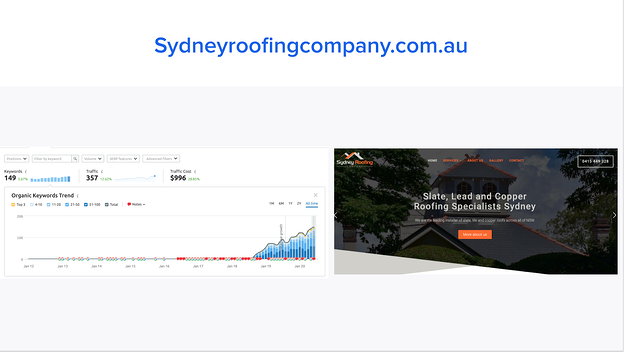
- Contrary to the example above, Sydneyroofingcompany.com.au has been consistently improving its rankings over the last year. Similarly to Healthline.com, it seems like the site gets a boost every time Google releases a new Core Update.
- According to SEMrush, sydneyroofingcompany.com.au used to have 65 keywords within the first 10 pages of Google (2 on top 3 positions) back in May 2019. In May 2020 they have 141 (8 on top 3 positions)
E-commerce – Vitamins
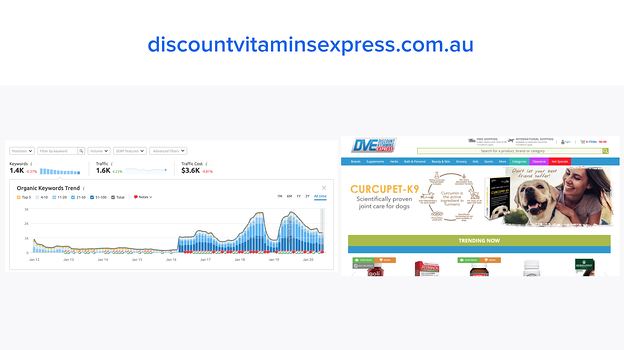
- According to SEMrush, discountvitaminsexpress.com.au historically has been having issues maintaining rankings. The site experienced the first significant drop in terms of rankings back in September 2018 (Core Update) and a second one in July 2019 (Core Update Announced in June 2019)
- The site’s biggest drops happen around generic vitamin/supplements keywords like “australian vitamins”. We have also seen drops for other brands keywords like “super collagen or blackmores pregnancy”

- Blackmores.com.au has developed a content strategy that seems to be working from an SEO perspective. The site significantly improved its organic rankings in May 2020 (Core Update) and its ranking now for more than 1500 keywords on the top 3 spots.
- The site’s “health hub” is allowing blackmores to attract more visitors via organic search by targeting users at different stages of their buying journey.
Recommendations For Marketers & Business Owners
Here’s a list of recommendations that will help you succeed through a core update:
1. Don’t build your SEO plan based on algorithms updates
Google’s algorithms change frequently, but their principle remains the same: “Deliver the best experience possible for the user”. Every single element on your website must provide answers to the user’s problems.
2 .Understand Your Users Intent
Eugene Schwartz broke down customer awareness into five distinct phases with different intents and objectives.
Use Schawartz’ 5 levels of customer awareness, to improve your understating of your user intent and make sure you map out content to each of these phases

3. Develop a framework to determine authoritative content for your industry
Every industry is different and it’s a marketer’s responsibility to create a framework to identify existing patterns, attributes, gaps and opportunities that will allow you to create “authoritative content”
Here’s a 3 steps framework you can use to develop authoritative content
- Identify your Audience (Who they are and where are they)
- Define Content Opportunities & GAPs: It is important to identify patterns on the content that is currently ranking. Are they using scientific citations? Are they using video or any type of multimedia? etc.
- Distribution Plan: Identify where to distribute your content to attract the right audience.
4. Track & improve your user experience
Google announced at the end of May 2020, that the search engine will be using a set of metrics to assess “page experience” as a potential ranking factor.
For now, Dwell time is one of the most important metrics you should analyse tracking the experience your site is providing to Search engine users. It refers to the length of time a visitor spends on a page before returning to the SERP.
- A longer period of time spent on a page is termed a long click, and is a hint that the user found the information relevant for the query.
- In reverse, a short click indicates that the user is not satisfied with the information they’ve discovered.
In addition to Dwell time you need to look into your core web vitals as a way to monitor and optimise user experience
5. Step by step process to diagnosing traffic drops during a core update
After a core update, it’s essential to monitor and analyse traffic drops and fluctuations for your site based on primary data. Don’t panic and rush to make changes before understanding the problem and potential solutions.
Here’s a step by step guide you can follow to diagnose traffic drops during a core update:
- Analyse Trends Around User Acquisition: Create comparisons between multiple segments and time frames (YoY, MoM, WoW & DoD). Your goal here is to identify whether or not your acquisition efforts have been impacted by a core update.
- Look at your rankings in detail: Assess your rankings performance in detail, avoid broad analysis. Breakdown your site within different sections based on topics and user intent.
- SERPs & User Intent: Find out if Google updated its SERPs and/or the user intent changed. Look at new Search Features and the type of pages ranking. Back in 2018 it was possible to rank commercial pages for informational keywords which is something that is getting harder as Google improves its algorithm.
- Keep An Eye On Your Audience Behaviour: Have the conditions of your users changed? Is your solution still relevant for them? Make sure you monitor your audience behaviour on an ongoing basis to understand and predict potential behavioural shifts.
The best thing you can do is to look at the big picture and always prioritise your users over any type of technological change.
Closing thoughts
Google’s core updates are frequent and come with significant changes that may affect your acquisition efforts. Due to the lack of trustworthy information it is crucial for marketers to focus their attention on understanding their audience better than anyone in the market (even better than Google)
If you plan a correct SEO plan that is engineered around your users (not based on algorithm updates), then your business is best positioned to succeed in this dynamic landscape.









